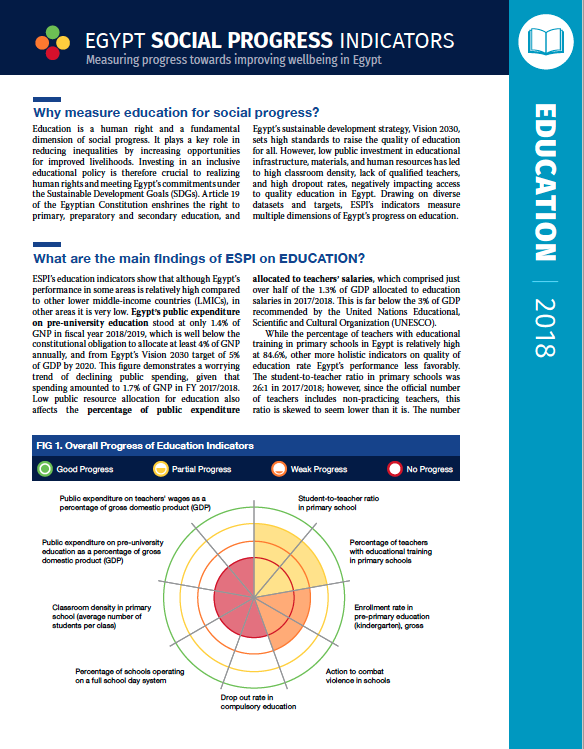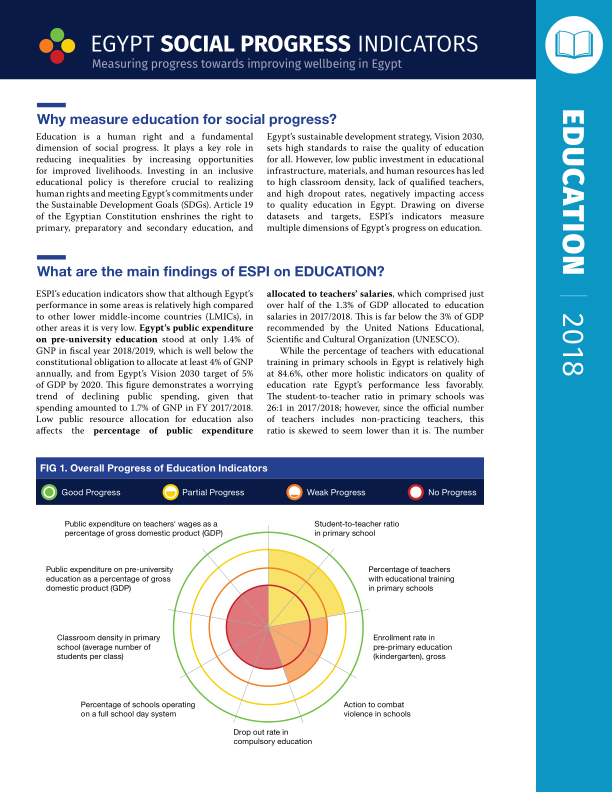This factsheet is available in pdf format here
ESPI’s education indicators show that although Egypt’s performance in some areas is relatively high compared to other lower middle-income countries (LMICs), in other areas it is very low. Egypt’s public expenditure on pre-university education stood at only 1.4% of GNP in fiscal year 2018/2019, which is well below the constitutional obligation to allocate at least 4% of GNP annually, and from Egypt’s Vision 2030 target of 5% of GDP by 2020. The percentage of public expenditure allocated to teachers’ salaries comprised just over half of the 1.3% of GDP allocated to education salaries in 2017/2018. This is far below the 3% of GDP recommended by the United Nations Educational, Scientific and Cultural Organization (UNESCO).
While the percentage of teachers with educational training in primary schools in Egypt is relatively high at 84.6%, other more holistic indicators on quality of education rate Egypt’s performance more poorly. The student-to-teacher ratio in primary schools was 26:1 in 2017/2018 and the number of students per class reached approximately 47.5 in 2017/2018, much higher than rates prescribed by national urban planning authorities. The drop-out rate in compulsory education was 7.3% according to the 2017 education census, far from Egypt’s target of reaching 2% by 2020. The gross enrollment rate in pre-primary education was 26% in 2017/2018, representing a 31% decrease compared to the previous school year, and low in comparison to other LMICs.
To improve performance on education, and the status of the right to education in Egypt, major shifts in public policy will be needed, including increased public investment in education infrastructure and teachers’ salaries, strengthened legal and administrative measures to combat violence in schools, and efforts taken to prevent dropping out. It is also recommended that Egypt allocate at least 4% of GNP for pre-university education, and progressively increase allocations to education in order to meet international benchmarks.

